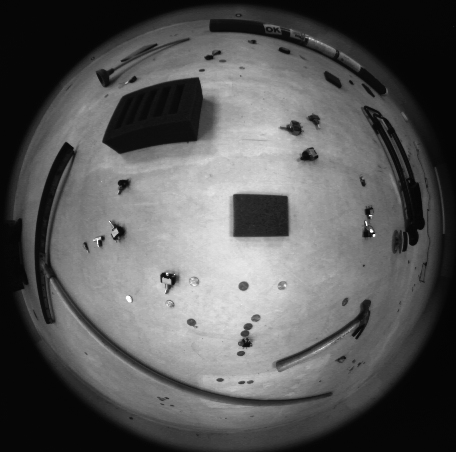







Data Interpretation
The data sets presented here represent cohesive inertial-visual scenes. All
scenes come with color images, inertial data, and a MATLAB workspace containing
several useful variables. The synthetic scenes, rendered in POV-Ray, also include
depth maps and ground truth for the body motion. A simulated scene may have several
inertial runs associated with it, since Monte Carlo simulation differs each
time. I am also willing to make new simulations for the purpose of comparison with
other estimation methods. Please take a look at the relevant papers:
D. Diel, P. DeBitetto, S. Teller. "Epipolar
Constraints for Vision-Aided Inertial Navigation."
IEEE Motion and Video Computing. January 2005, pp. 221-228. (ADDENDUM)
David D. Diel. "Stochastic Constraints for Vision-Aided Inertial Navigation." MIT Masters Thesis, January 2005.
You will need MATLAB and the Image Processing Toolbox to make full use of this
data, although the images and inertial output can be read by other means. If
you plan to use MATLAB, then you should get these helper
functions.
- The inertial data is in international metric units, and can be read with
ReadIMUdat().
- Newer versions of MATLAB recognize the .png image format. Use imread() or
the helper function ReadColor().
- The depth maps must be read in their native 16-bits-per-pixel format. The
least significant bit is equivalent to one millimeter. Use the helper function
ReadDepth() for automatic conversion to meters.
- The workspace can be read with the command load('workspace'). The most important
variables are explained below:
- INITIAL_BODY_STATE = [ quaternion ; position ; quaternion temporal derivative
; position temporal derivative ]
- IMU_TYPE = might be a manufacturer's part number or might be something else
- GEODETIC_LATITUDE = Earth geodetic latitude in radians
- CAMERA_OFFSET = position of the camera focus relative to the IMU's inertial
axes in meters
- T_cam = camera time stamps in seconds
- CAMERA_TYPE = for camera calibration data, contact David Diel <ddiel
at mit dot edu>
This material is based upon work supported by The Air Force Research Laboratory
(AFRL) under Contract No. F33615-98-C-1201. Any opinions, findings and conclusions
or recommendations expressed in this material are those of the author(s) and do
not necessarily reflect the views of AFRL. Please direct feedback to David Diel
<ddiel at mit dot edu>.









